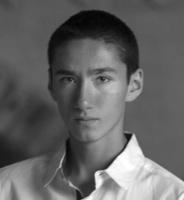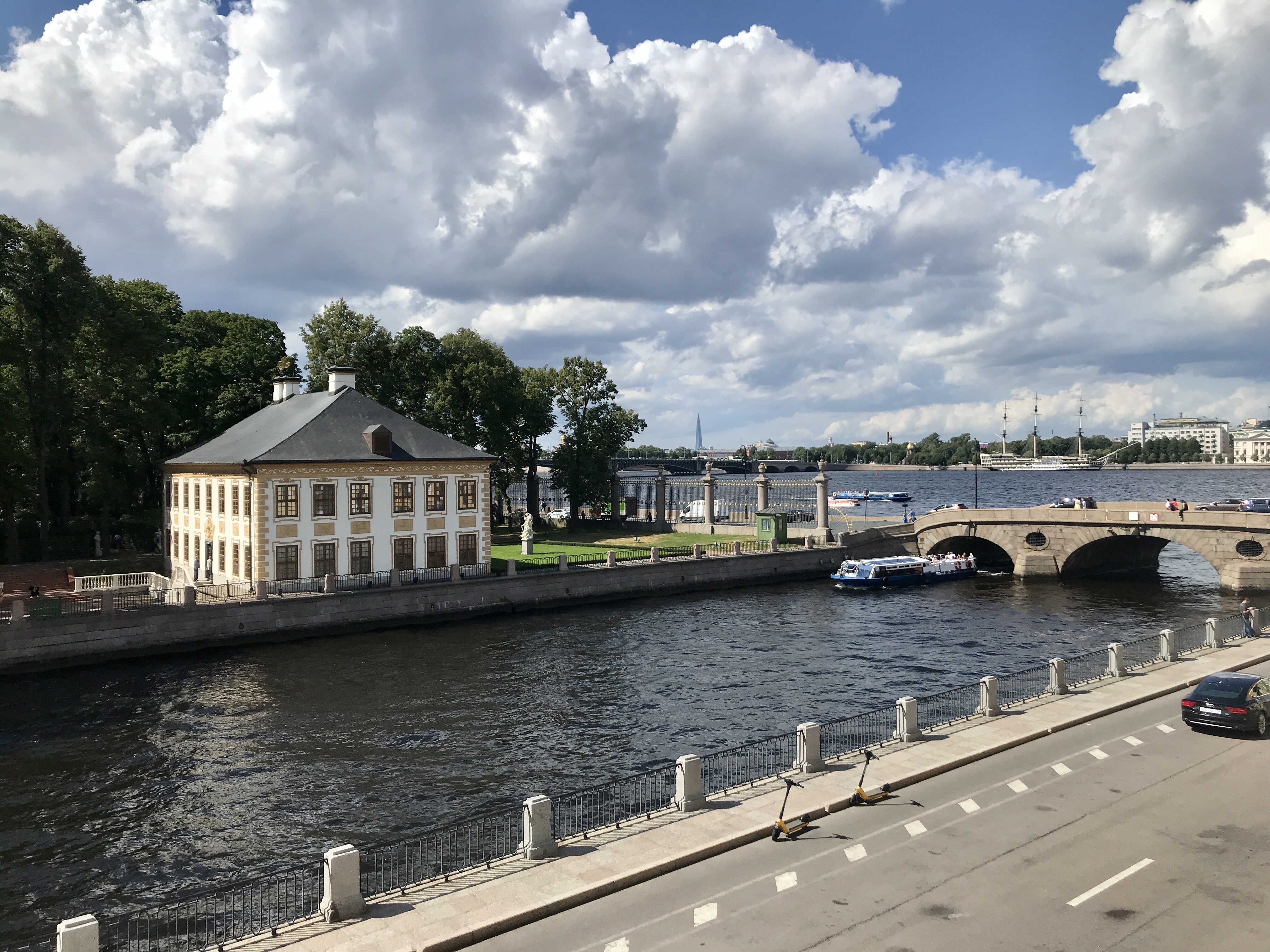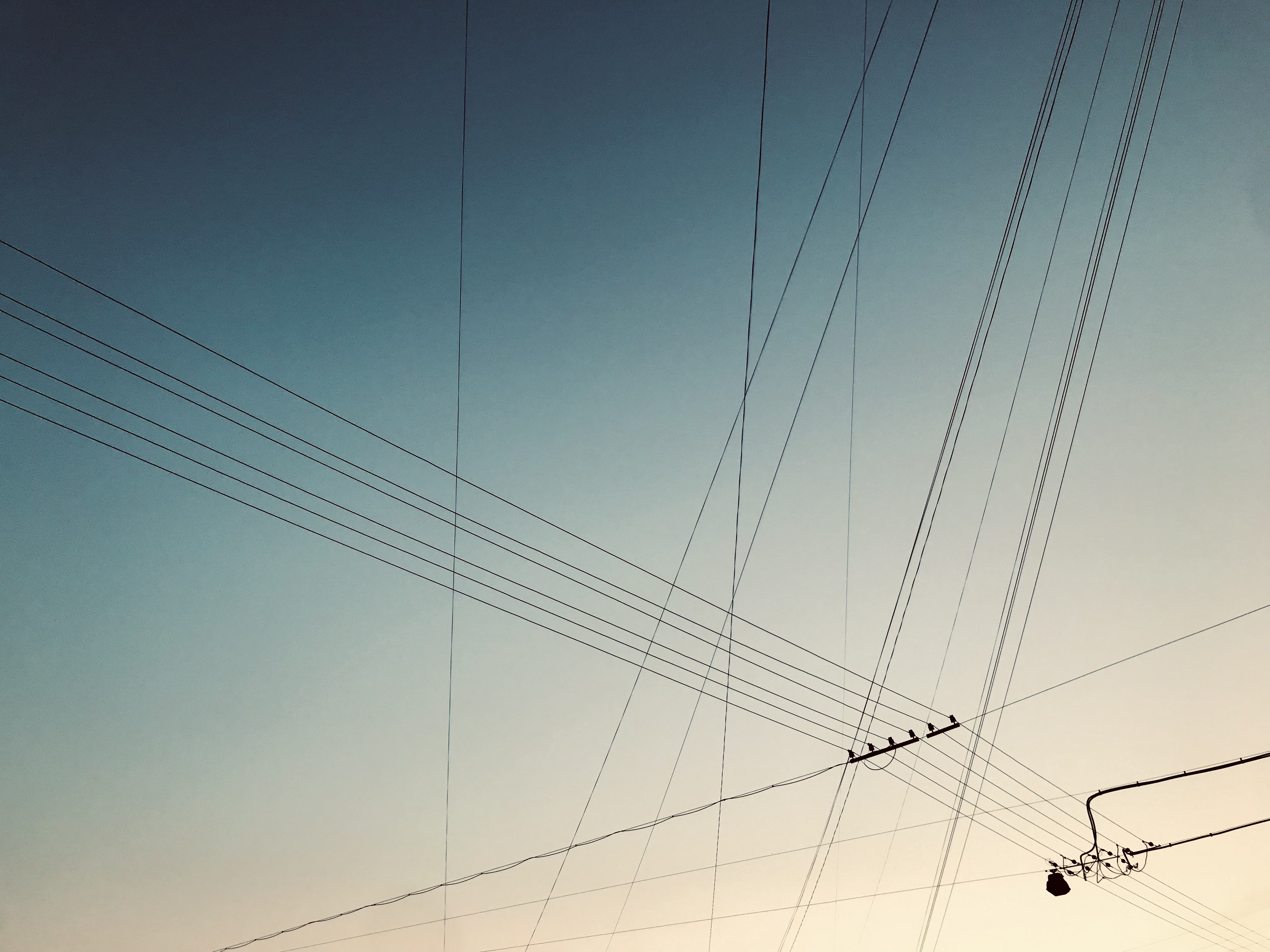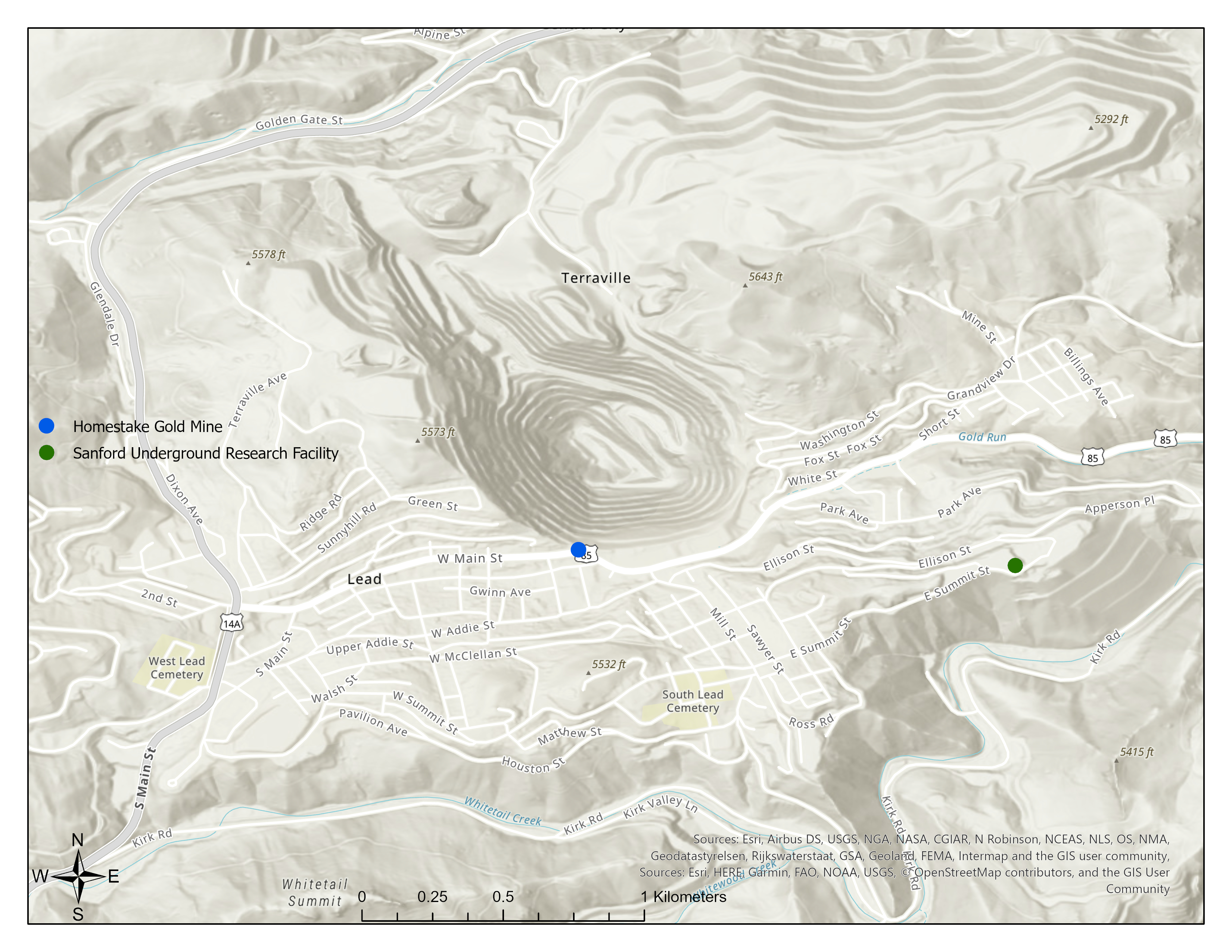Maxim Shapovalov

Maxim Shapovalov is a student at University of California, Riverside currently completing his research at Pacific Northwest National Laboratory under Mr. Parker Sprinkle.
Looking Over Yonder
August 1st, 2021
When I imagined a summer internship, I always pictured a mixture of shadowing a professional and performing menial tasks at the worksite.
My expectations were changed as soon as I realized that the worksite is wherever I can analyze MatLab scripts on my laptop. For a virtual internship, I suppose it was as proper as it could be: weekly meeting, a lot of patient explanation from advisors, and newly gained skills/knowledge. If I was to compare this experience to working in a research lab at my university, then I would say that it was very similar: PI explains the project, provides the data, and lists the methods we will use to analyze that data. Ultimately, I am glad that I could establish a working relationship with another IRIS intern and seismologists from a national lab.
Being a part of this project made me realize several key things:
- Research work is almost always going to be team work and that is a big advantage. There can always be an extra pair of eyes that can have a fresh look at the project and give helpful ideas
- Balance between important work and having fun exists. Although many factors affect this, it is possible to live your life and focus on other projects while conducting research. This is one of those things that seems somewhat obvious but is easy to overlook/forget. Tracing back to the industrial revolution and the motto of a labor union: 8 hours for sleep, 8 hours for work, and 8 hours for whatever you will (not exactly word for word).
If I ever wish to reach the level of the various advisors I was fortunate to work with, then my focus will be to continue to practicing research and heed advice.
Lastly, a note to self and whoever else stumbles across this: no matter how involved the work gets, never forget to look out the window; the strength that is needed to finish a project often lies in the poetry of the world surrounding you

A Dynamic Summer
July 27th, 2021
Ever since I started high school in the US, my summers usually looked like this: I come to Moscow, Russia, skate until my legs fall off, and do nothing else. That lifestyle is lovely for a few weeks, until I start getting bored out of my mind.
This summer is exceptional because I am able to enjoy two pastimes that I thought would never coincide: skate with my Russian pals and engage deeply in intellectual work.
Albeit not perfect, the balance that I found between the two activities makes this summer both vibrant and viable.
It is difficult for me to pin-point any challenges of this summer because for me, challenges are virtues.
For a few years I had rough time with asthma, so now I breathe as much as I can and enjoy every breath.
When I skate, I go non-stop for hours, perspiration galore, so I always drink as much water as I can and enjoy every sip.
This summer, not an hour goes by when I am bored, so I work through my busy graphic and enjoy every task.
Moral: work is as important to me as water and air, and I love it.
Additionally, I have an odd attraction to power lines, so here are some delightful ones from the skies of Saint-Petersburg

Stay busy!
Cheers
Let’s Look at Some Figures
July 10th, 2021
Very soon we will begin to more closely analyze the differences in coda wave traces for the purpose of monitoring fracture development.
At first, we start with one trace (the reference trace)

For the sake of simplicity, I'll ask you to pay attention to only the top and bottom windows. The top window shows the correlation coefficient, while the bottom most window shows the seismic signal itself (in orange).
The signal is received by 1 hydrophone (hydrophone #1) from a single source (source #2); this can be seen on the top of the correlation coefficient window.
Next, we cross correlate a signal that was made several minutes after the first (reference) trace. In other words, another signal is received and we stack that second signal on top of the first one.

Notice how the correlation coefficient is pretty solid at first and then starts dropping toward the end. It means that the second signal is virtually identical to the first signal, but it starts to look a bit different further down the tail of the signal. Next, we shall add yet another signal on top of this purple one:

Wowza! Things got a bit more funky here. It appears as though the third (green) trace wasn't too similar to the purple trace, and it is clearly visible on the correlation coefficient window. Let's see what happens if we stack (cross-correlate) yet another trace (that was done to the same hydrophone from the same source of noise, but at a later time):

Yep, still rather funky. The idea – at least the way I understand it at this stage in the project – is that when the correlation coefficient is high (=1), then the medium through which the seismic energy traveled has not changed. However, as soon as things start getting funky (so, with the stacking of third and fourth traces here), that's when there has been some change in the medium; the goal will be to more closely characterize and monitor those changes that were induced by hydraulic fracturing at SURF (Sanford Underground Research Facility).
To better understand the science behind this project, I recommend reading the following paper: The Necessity for Iteration in the Application of Numerical Simulation to EGS: Examples from the EGS Collab Test Bed 1 (White et al., 2019). In there, White et al. explain more in depth how monitoring this fracking development will contribute to the enhancement of current geothermal technologies. Additionally, You can find more specific information about the test site (Test Bed 1). Technically, the results that I and Estevan will yield will be a small continuation to the White et al., 2019 paper.
1 Challenge, 1 Success, and a Worksite Map
June 28th, 2021
One challenge that I'm facing seems more than a concern than a challenge. Similar to many other rising seniors who like academia, I am concerned about applying to graduate school programs. Although I've repeatedly been told how the process goes down, I am now concerned with writing the initial emails and finding the right programs. I recognize, however, that once I sit down and actually start actively searching, it will not be too difficult to start composing the first emails.
One success I am relatively proud of is doing a good job in the Sesimology Skills Building Workshop, where we have been scripting in UNIX for seismology related matters. Related to that, I am also glad that my time management has been really good in terms of enjoying my summer and getting all of the necessary modules and tutorials done on time.
And here is an interesting assignment that we were presented: a map of the worksite where our data was gathered.
I consulted with my colleague Estevan Munguia and decided to shamelessly steal his idea of creating the map in ArcGIS Pro, access to which I am fortunate to have through my university. Everything is happening in a small town called Lead, located in South Dakota, USA. More specifically, all of the seismic data is collected at a depth of 4850 ft at SURF, the Sanford Underground Research Facility that is located in the former Hanford Gold Mine.
Funny enough, I've actually been to that town before and saw the former gold mine, and never have I thought that I would have to analyze data from that region. Life is funny
Anyway, on the map you can see where the main quarry of the Hanford gold mine is located, and where SURF is relative to the quarry. In the first experiment of the EGS Collab, the 4850 Level of SURF is comprised of phyllite of Precambrian Poorman formation; there, well-controlled in-situ experiments that focus on rock behavior after hydraulic fracturing will be conducted (White et al., 2019).

Works Cited:
White, Mark, Johnson, Tim, Fu, Pengcheng, Wu, Hui, Ghassemi, Ahmad, Lu, Jianrong, Huang, Hai, Neupane, Hari, Oldenburg, Curt, Doughty, Christine, Winterfeld, Philip, Johnston, Henry, Pollyea, Ryan, Jayne, Richard, Hawkins, Adam, and Zhang, Yuran. The Necessity for Iteration in the Application of Numerical Simulation to EGS: Examples from the EGS Collab Test Bed 1. United States: N. p., 2019. Web.
Typing out my first Elevator Speech
June 23rd, 2021
I honestly thought that this assignment wouldn't be too difficult. I feel like I have to explain what I do in college for research at least once a week to newly met peers or some random family friends. After a while, I figured what terms are best not to use and which are a lot more feasible for people (shear wave splitting vs seismology stuff (or even easier: earthquake stuff)).
For my elevator speech, my intended audience was people outside of seismology.
I also believe in "short & sweet" so I tried to make it as short yet clear as possible.
Personal note (aka rambling): shameless self-promotion, such as pushing an elevator speech, is tough for me. I think a lot depends on the context of the situation, and I would most likely not just randomly butt-in out of the blue and tell people "hey, in my iris internship, I look at coda waves to study fractures underground for the general purpose of improving geotechincal solutions worldwide" (or something like that); it would feel very out of place and unwanted. I think what scares me is the term 'elevator speech', implying that it will happen in an elevator (scary because you can't run away until the ride is over).
Conclusions of rambling: chances are, the speech will be put forth not in an elevator, but at a conference/symposium. And chances are, saying the speech won't be so out of the blue (it will be somewhat relevant either way). Thus, it's great practice to write one out and practice, but for a modest person, it feels uncomfortably forced to engage in an activity like this. However, if a person wants to a) expand his/her networking and b) break the chains of the imposter syndrome, writing an elevator speech will prove very useful.
Data & Skill
June 15th, 2021
- Data
Although my project is supposed to kick-off only this week, I already have a general sense of what kind of data I will analyze and for what purposes.- The data I will analyze was collected in Washington
- It is not widely available and will have only a small number of people actually looking at it
- Most likely I will have to look at raw data and see whether soil desiccation is successful in the region
- Skill
One of the most important skills for me is to understand the research project. I realized that it is not uncommon – espeically in seismology/geophysics – to have intricate project designs. Over time, however, the project becomes clearer. And speaking from personal experience, the more I comprehend the project and its research methods, the faster/easier the work gets. Thus, it is important for me to grasp the project as much as I can in order to feel confident about completing it.
What are the goals?
June 7th, 2021
For this summer's internship, the main goal for me is quite simple: be more knowledgeable than before.
More specifically, I would like to see how seismology and hydrology can coincide (or how we can study one thanks to the other), and get the sense of how operations in a National Laboratory are performed (the hierarchy, speed of actions, science vs bureacracy, field work opportunities, collaborations etc.).
To break up the goals into more quantifiable segments, I shall list what I want to achieve in each part of the internship.
Note: after pondering about this, I realized it's quite tough to say what I want to have achieved by each third of the internship. I have a number of goals for myself, but they are meant to be developed gradually over the entire course of the project. Thus, I will list out some general goals and see how I can figure out whether I achieved them by the end of it all.
- Adaptation: how quickly can I adapt to using new methods of data analysis? The goal is to not pester my advisors every 5 minutes about how to run the code.
- New concepts: can I be a good noodle and grasp new concepts with ease? The goal is to acquire new knowledge and be able to share that information accurately and confidently.
- Coding: deteriorated, plateau'd, or improved? My speculation is that with SSBW and data analysis in MatLab for my project, I will improve at scripting. At the very least, I will understand what are some general commands a scientist would use to analyze seismic data. Although this may vary a lot project to project, I feel like there is a general pool of actions that needs to be understood.
- Networking: did I gain any valuable connections? By the end of the project, how many more people in the field of science that is relevant to me can I now reach out to?
- Time management & balance. I never had a summer internship before so I am curious to see how I will balance work and enjoying the summer break. I have no doubt in my ability to do so, but the goal is to establish a healthy, working equilibrum where I get my work done quickly, correctly, and efficiently, and then also have time to fool around with friends at the skatepark.
- Presentation: can I gather my wits and present an AGU poster without being a complete knucklehead? This would require that I do my job well, collaborate with my advisor, make the poster aesthetically pleasing and clear to read, and practice speaking in front of really smart cookies.


